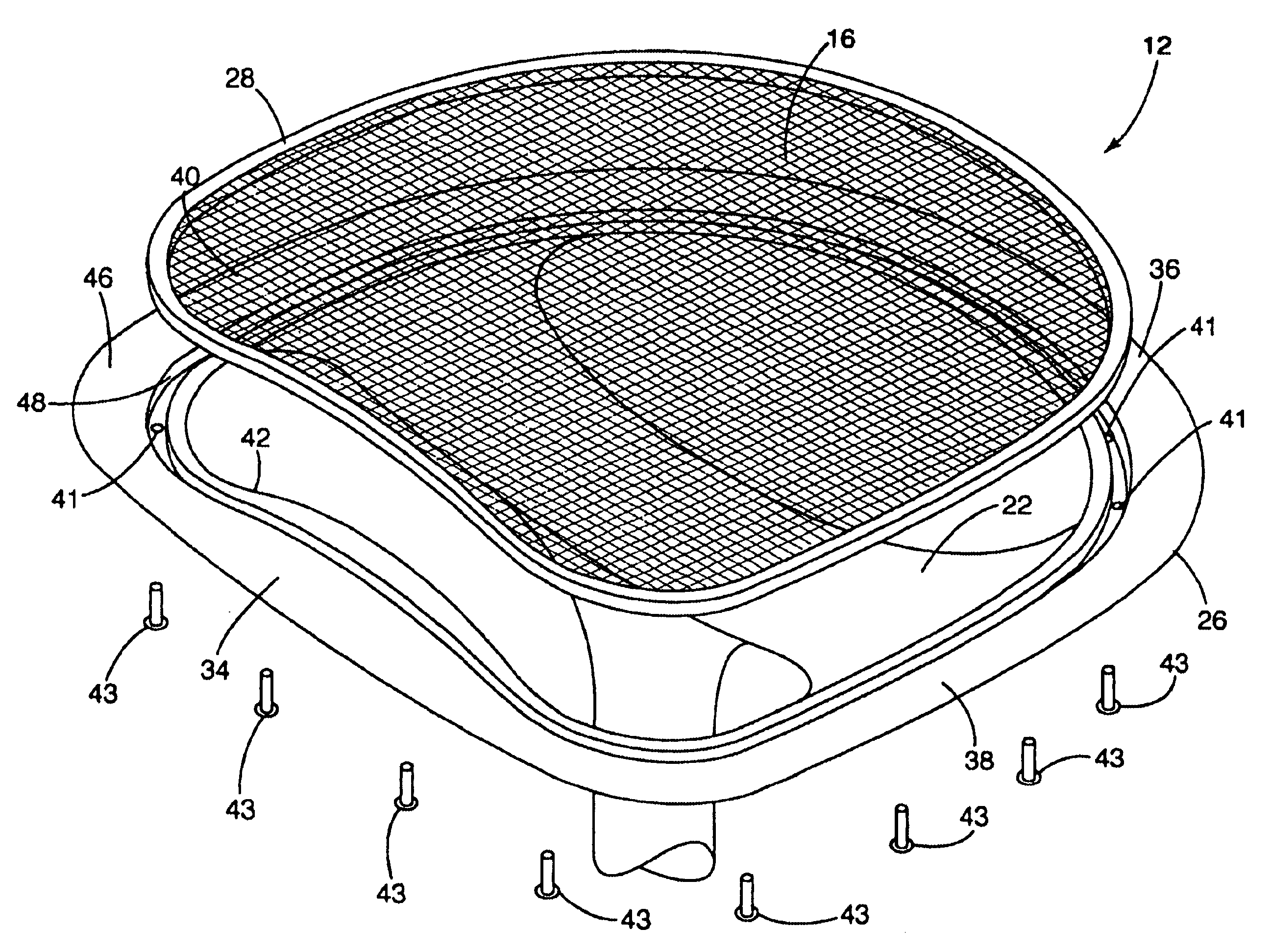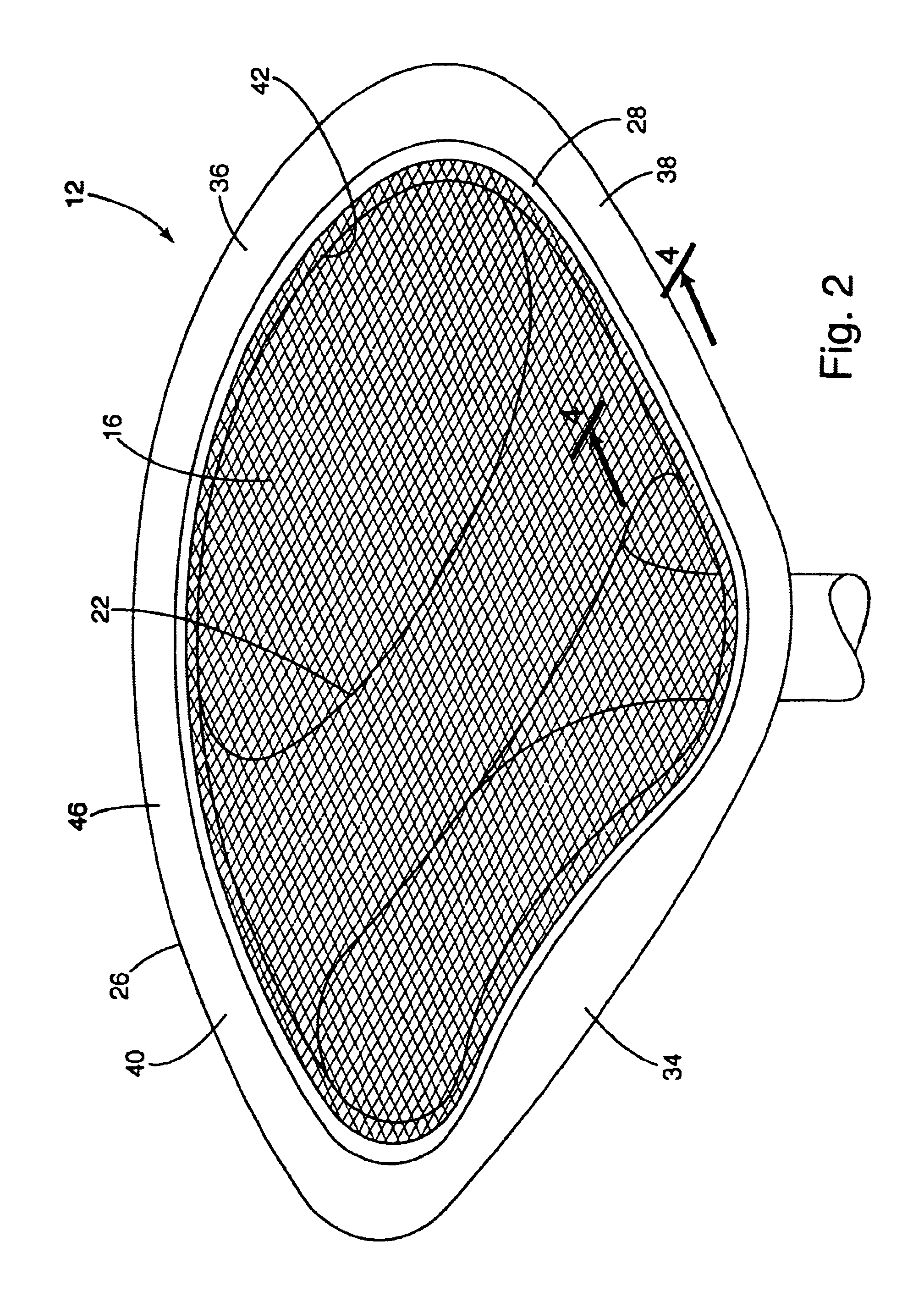Carrier and attachment method for load-bearing fabric
a carrier and fabric technology, applied in the field of carrier and fabric, can solve the problems of fabric unraveling or separating along the periphery of the fabric, the use of expensive looms and stretching machinery, and the inability of conventional attachment methods to provide the necessary strength and durability to withstand the forces applied to the fabric, etc., to achieve the effect of simple and effective, strong and durable interconnection, and relatively simple and inexpensive manufacturing of carrier and fabri
- Summary
- Abstract
- Description
- Claims
- Application Information
AI Technical Summary
Benefits of technology
Problems solved by technology
Method used
Image
Examples
Embodiment Construction
[0053]For purposes of disclosure, and not limitation, the present invention is described in connection with an office chair 10 having load-bearing fabric that forms the seat and back of the chair. The present invention is well-suited for use in a wide variety of other applications incorporating load-bearing fabric, such as other furniture applications, keyboard trays, mouse trays and cots. In the following description, the terms “inner,”“outer,”“inwardly,”“outwardly,”“upper” and “lower” are used to refer to directions relative to the geometric center of the fabric. Additionally, the word “expand” means to stretch, deform or otherwise increase the size of the object; the word “stretch” means to expand primarily through longitudinal elongation; and the word “deform” means to expand primarily through deflection or bending.
[0054]An office chair manufactured in accordance with a preferred embodiment of the present invention is shown in FIG. 1, and generally designated 10. The office chai...
PUM
| Property | Measurement | Unit |
|---|---|---|
| flexible | aaaaa | aaaaa |
| cross-sectional areas | aaaaa | aaaaa |
| strength | aaaaa | aaaaa |
Abstract
Description
Claims
Application Information
 Login to View More
Login to View More - R&D
- Intellectual Property
- Life Sciences
- Materials
- Tech Scout
- Unparalleled Data Quality
- Higher Quality Content
- 60% Fewer Hallucinations
Browse by: Latest US Patents, China's latest patents, Technical Efficacy Thesaurus, Application Domain, Technology Topic, Popular Technical Reports.
© 2025 PatSnap. All rights reserved.Legal|Privacy policy|Modern Slavery Act Transparency Statement|Sitemap|About US| Contact US: help@patsnap.com



